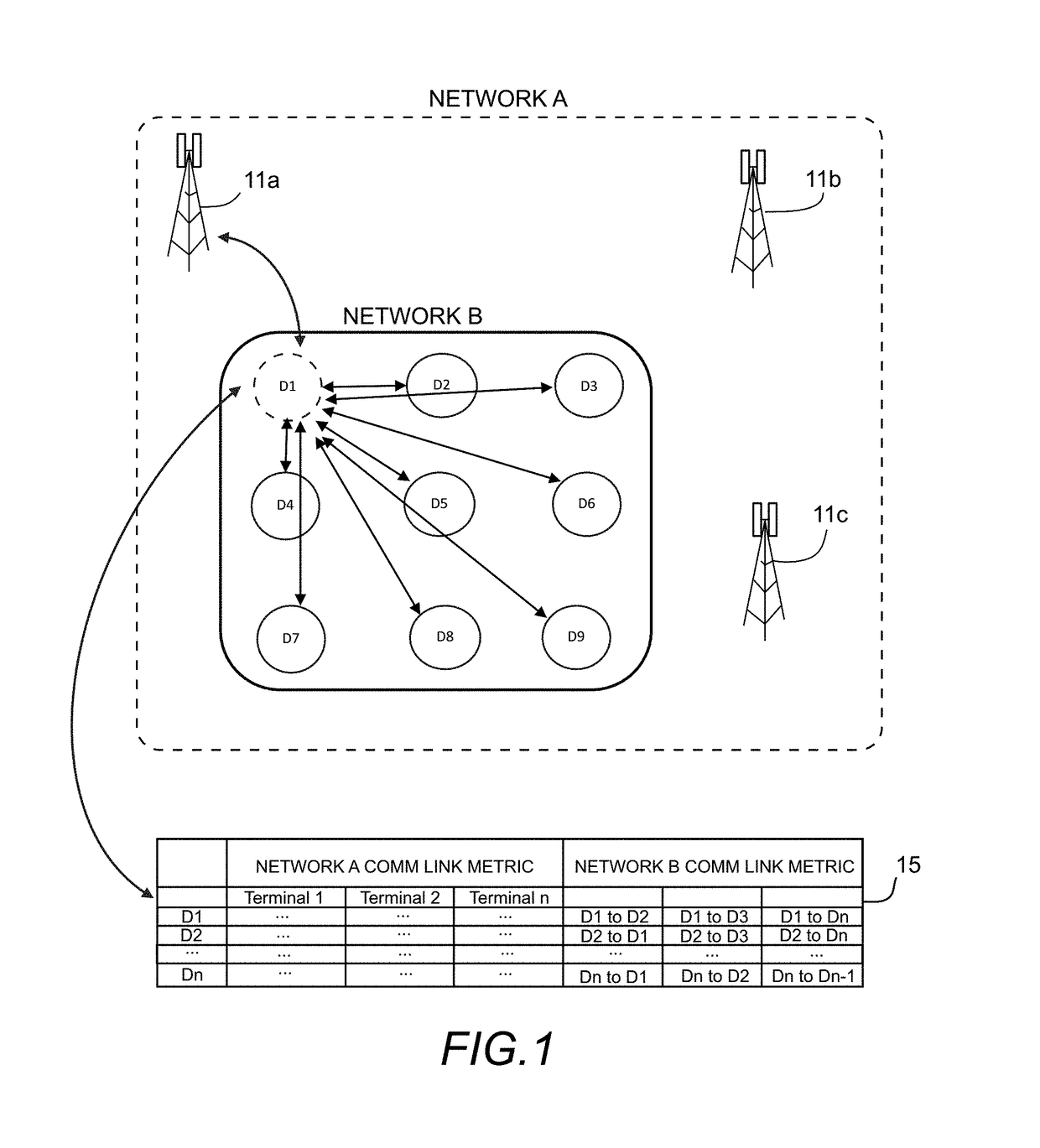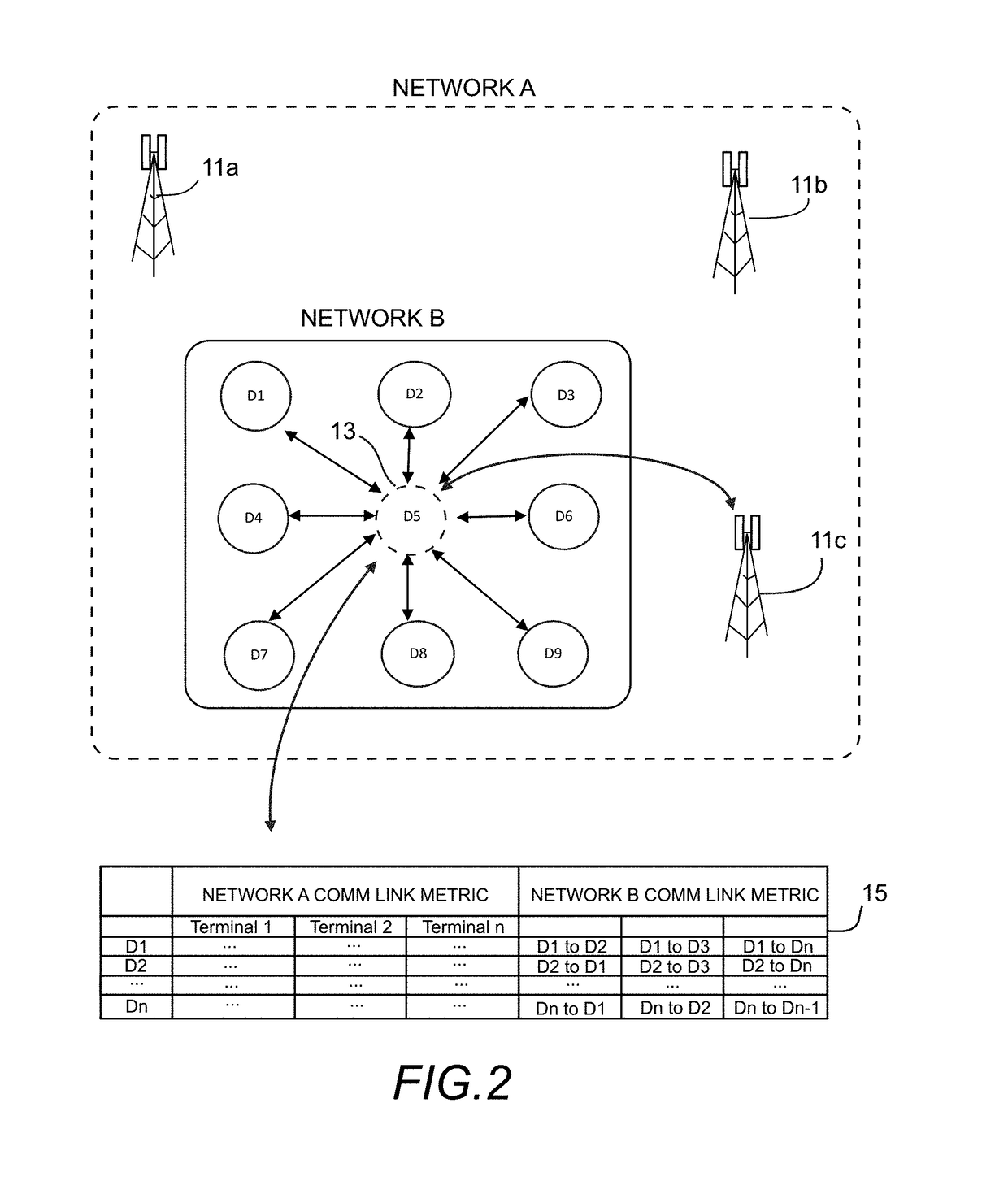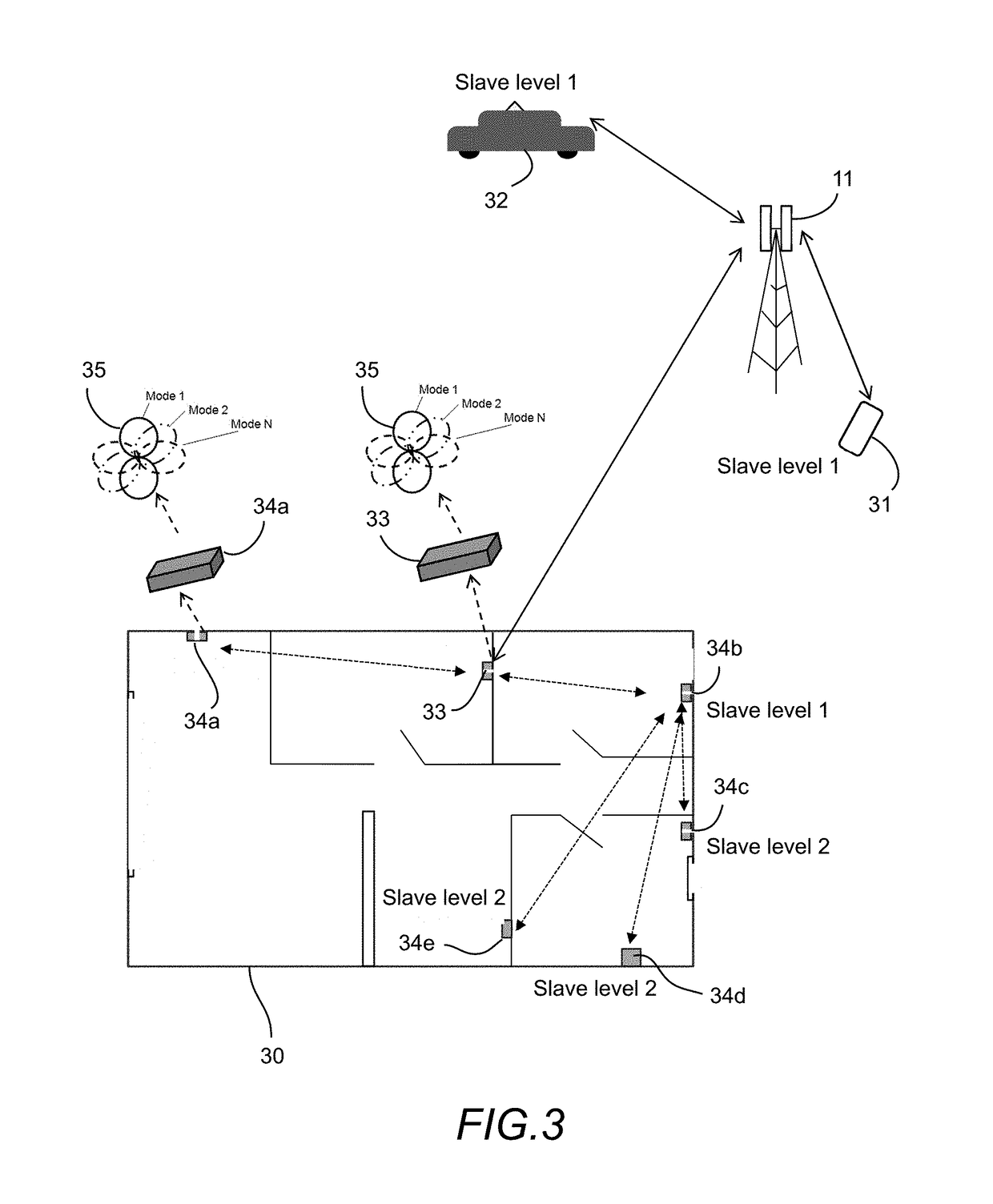Heterogeneous network optimization utilizing modal antenna techniques
a network optimization and modal antenna technology, applied in the field of wireless communication, can solve problems such as system strain, becoming clear, and the performance of in-building communication links for cellular networks becoming a problem area that needs to be addressed, and achieve the effect of improving communication properties
- Summary
- Abstract
- Description
- Claims
- Application Information
AI Technical Summary
Benefits of technology
Problems solved by technology
Method used
Image
Examples
Embodiment Construction
[0016]As cellular networks become more congested, off-loading users onto WLAN becomes an attractive solution. An area of improvement for today's devices and communication networks is better coordination between networks in regard to ensuring that all devices have access to cellular networks. When a group of communication devices are located in-building, and these devices are capable of communication on both cellular networks and WLAN, an improvement over today's system architecture would be to have the capability where an in-building device that has the best connectivity with the cellular network is used to control and coordinate data transfer of the other in-building communication devices on the cellular as well as the in-building WLAN network. Selecting the optimal in-building device to control and coordinate data transfer among the in-building devices will ensure that in-building communication devices that cannot connect to the external cellular network directly due to blockage a...
PUM
 Login to View More
Login to View More Abstract
Description
Claims
Application Information
 Login to View More
Login to View More - R&D
- Intellectual Property
- Life Sciences
- Materials
- Tech Scout
- Unparalleled Data Quality
- Higher Quality Content
- 60% Fewer Hallucinations
Browse by: Latest US Patents, China's latest patents, Technical Efficacy Thesaurus, Application Domain, Technology Topic, Popular Technical Reports.
© 2025 PatSnap. All rights reserved.Legal|Privacy policy|Modern Slavery Act Transparency Statement|Sitemap|About US| Contact US: help@patsnap.com



